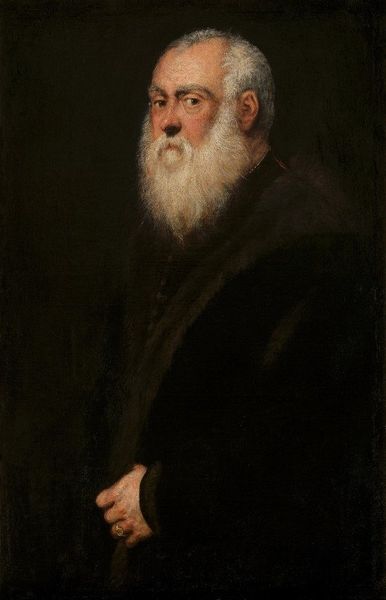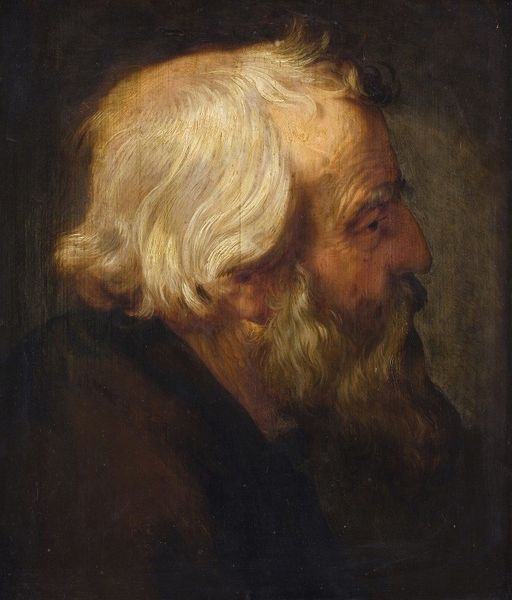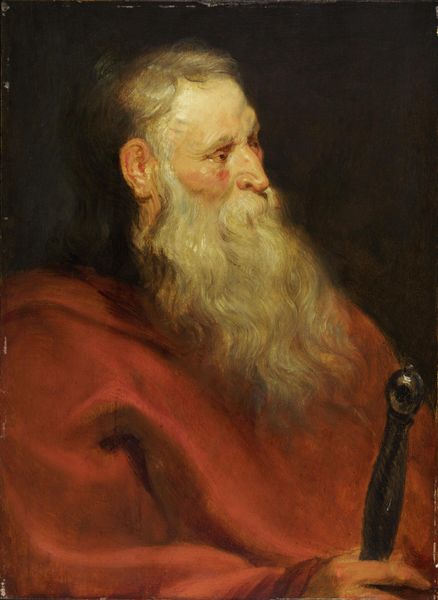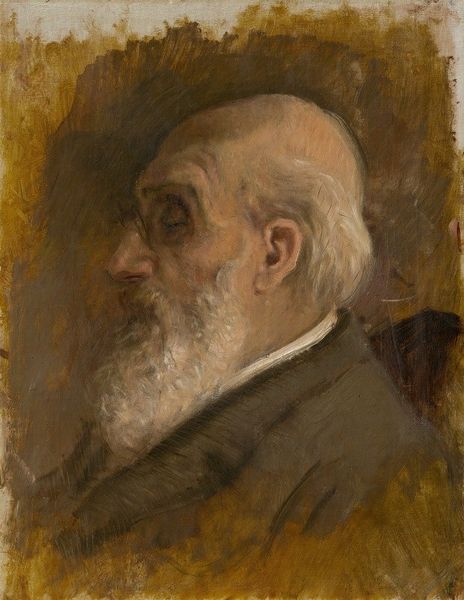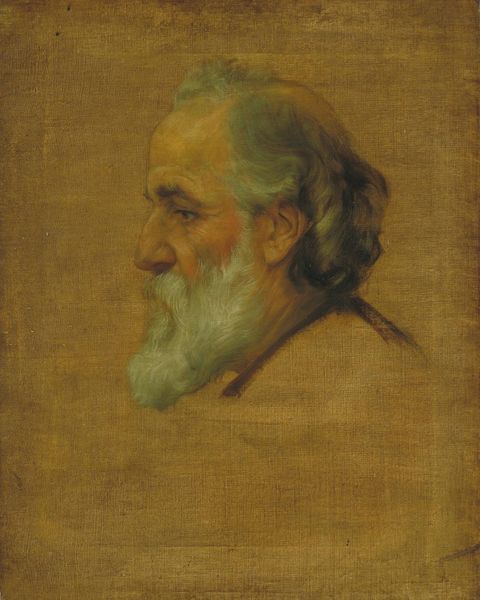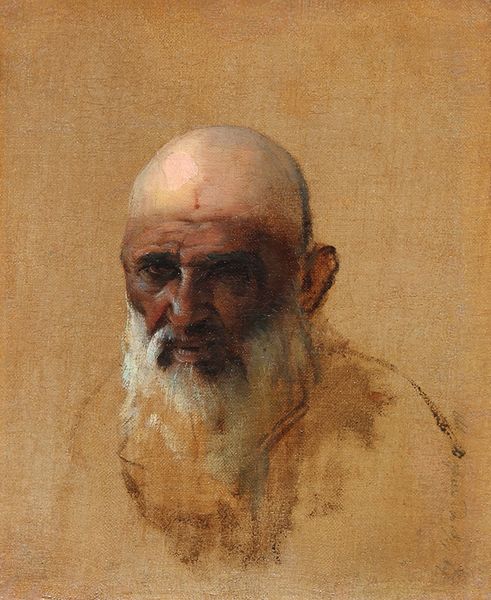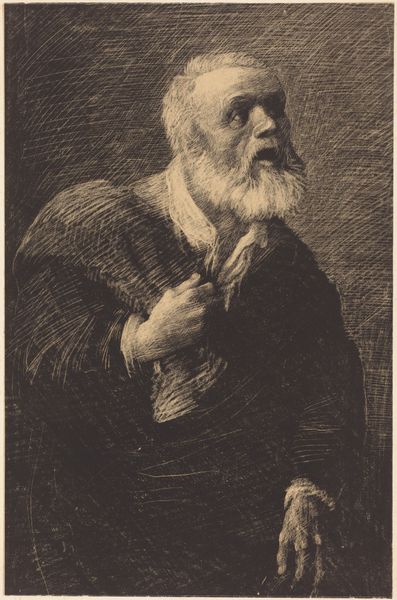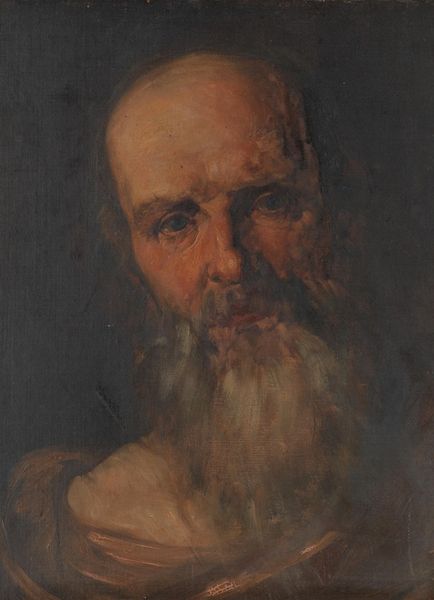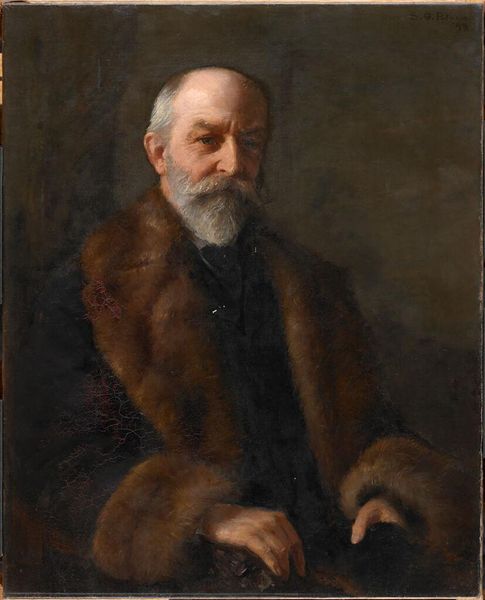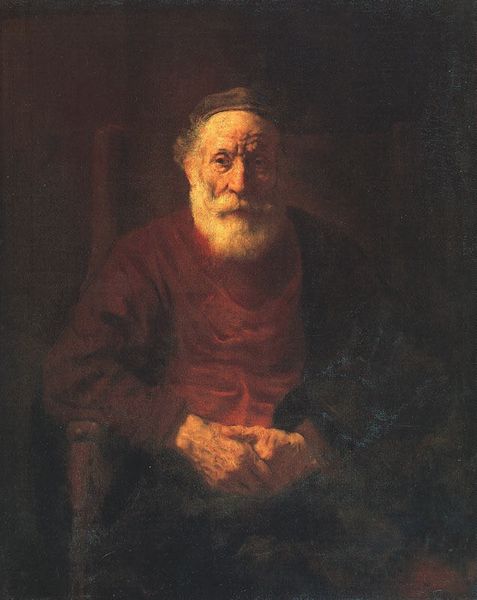
Copyright: Public Domain: Artvee
Curator: Let's spend a moment looking at Jean-Léon Gérôme’s "Head of an Old Man," completed in 1886. Gérôme was, of course, a central figure in the French academic painting establishment. Editor: He certainly looks every one of his years, doesn't he? There's a definite air of melancholy about the subject. The way his gaze is directed downward and away gives this painting a particularly somber feel, don't you think? Curator: Indeed. Gérôme, while known for history paintings and Orientalist scenes, often produced character studies like this. Consider his role in legitimizing realism. These weren't simply portraits of nobility but "types" representing a broader societal stratum, made palatable, of course, to bourgeois sensibilities. Editor: His beard and hair are magnificent; it reminds me of classic depictions of venerable philosophers and even religious prophets. I am drawn to how the white stands in stark contrast to his weathered skin. It’s symbolic weight hints at wisdom and time, although not necessarily happiness, has left their marks. Curator: Gérôme was adept at imbuing his subjects with a kind of archetypal quality, echoing the grand tradition of history painting even in these ostensibly "realistic" depictions. This painting exists within the broader 19th-century fascination with categorizing humanity. Museums became key sites for this. Editor: So, how did these depictions affect society? This work, through its realism and classical symbolism, elevates the sitter to an iconic stature and becomes more than just a painting of a man. It feels as though we can extrapolate his presence onto something more significant, though the symbolic value is somewhat inaccessible to a 21st-century audience. Curator: The art market, boosted by an emerging bourgeoisie, prized technical virtuosity paired with comforting moral narratives. Gérôme could navigate both these demands successfully, becoming one of the era's most prominent and, subsequently, criticized artists. The paintings function like ethnographic studies produced within the culture, not about it, normalizing visual ideas and the structures they prop up. Editor: This image, rendered with such skill, invites introspection about age, knowledge, and cultural memory, all carefully encoded into paint. I leave here thinking about how the artistic establishment perpetuates narratives. Curator: And how those narratives continue to inform our own understanding, even today.
Comments
No comments
Be the first to comment and join the conversation on the ultimate creative platform.
